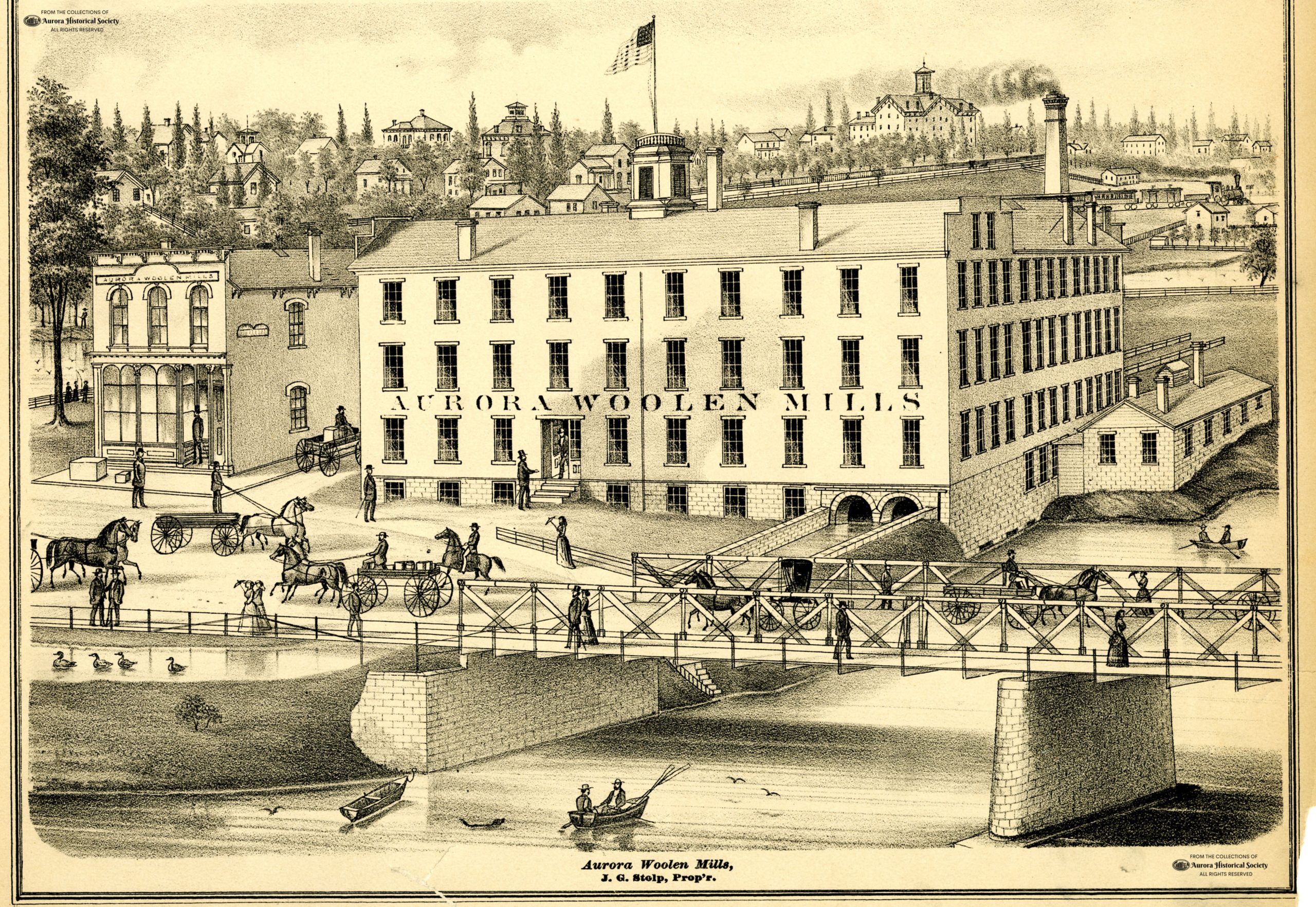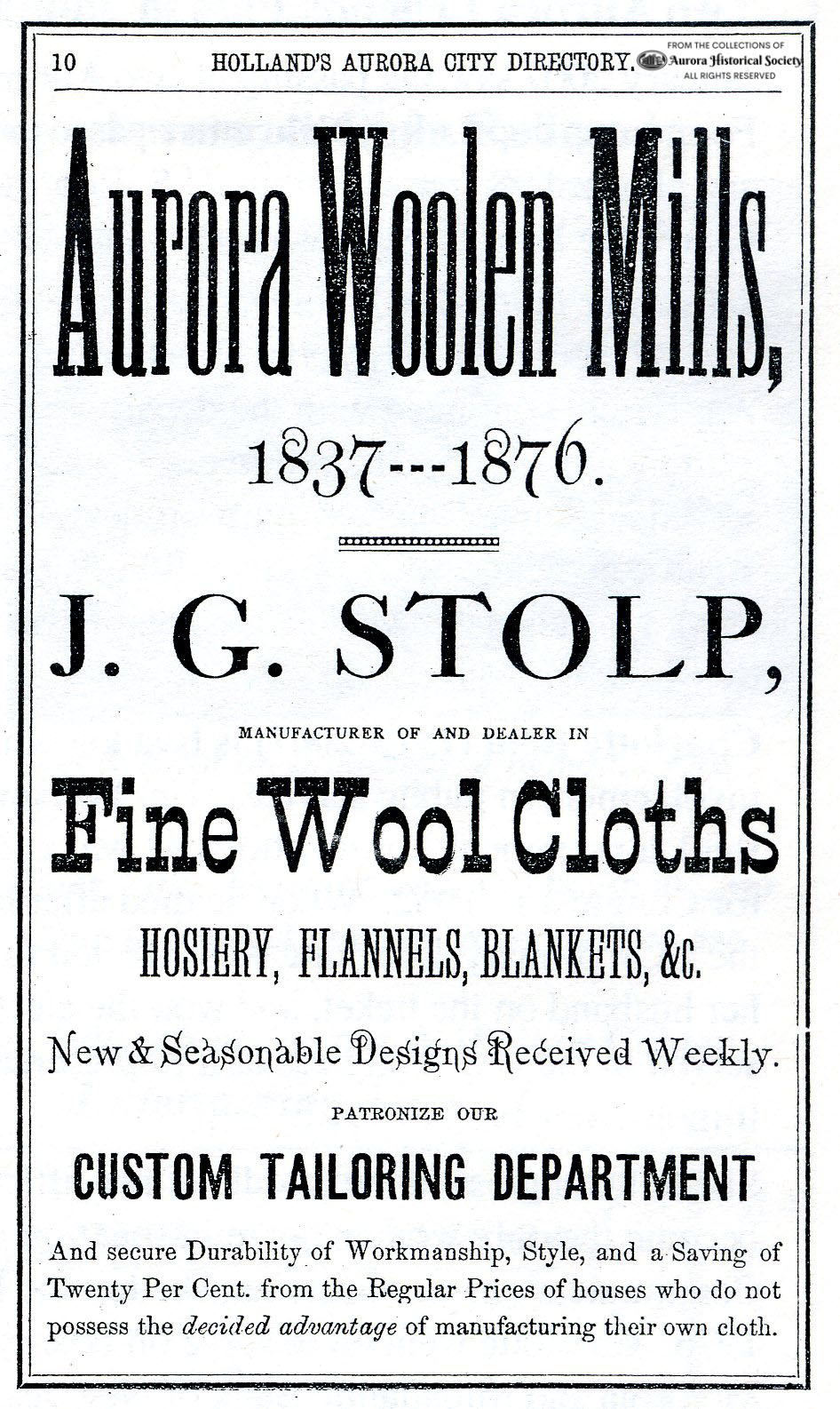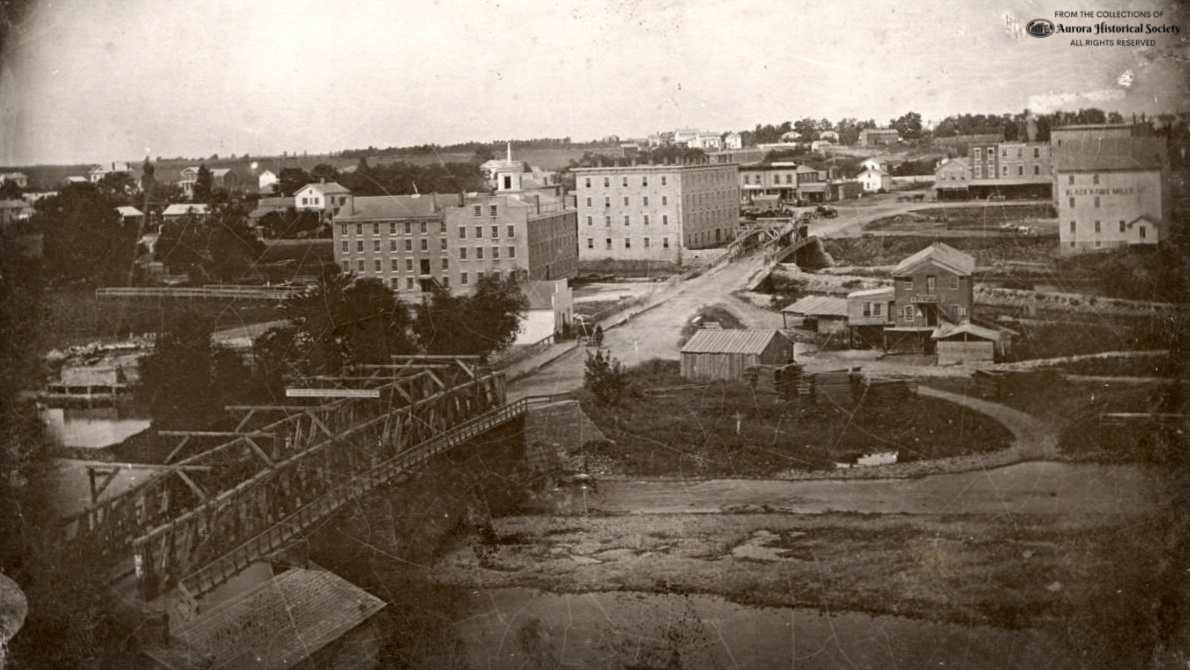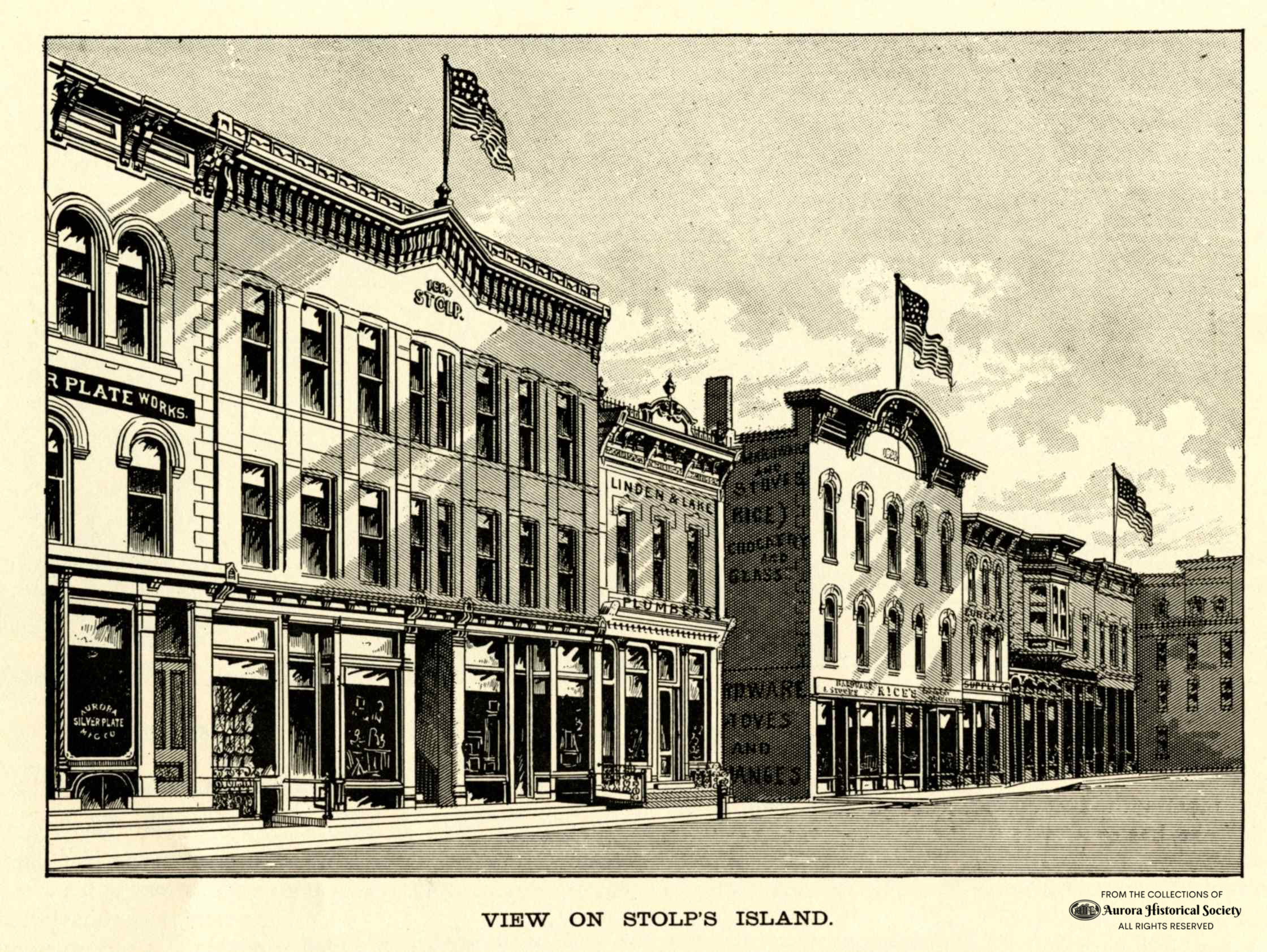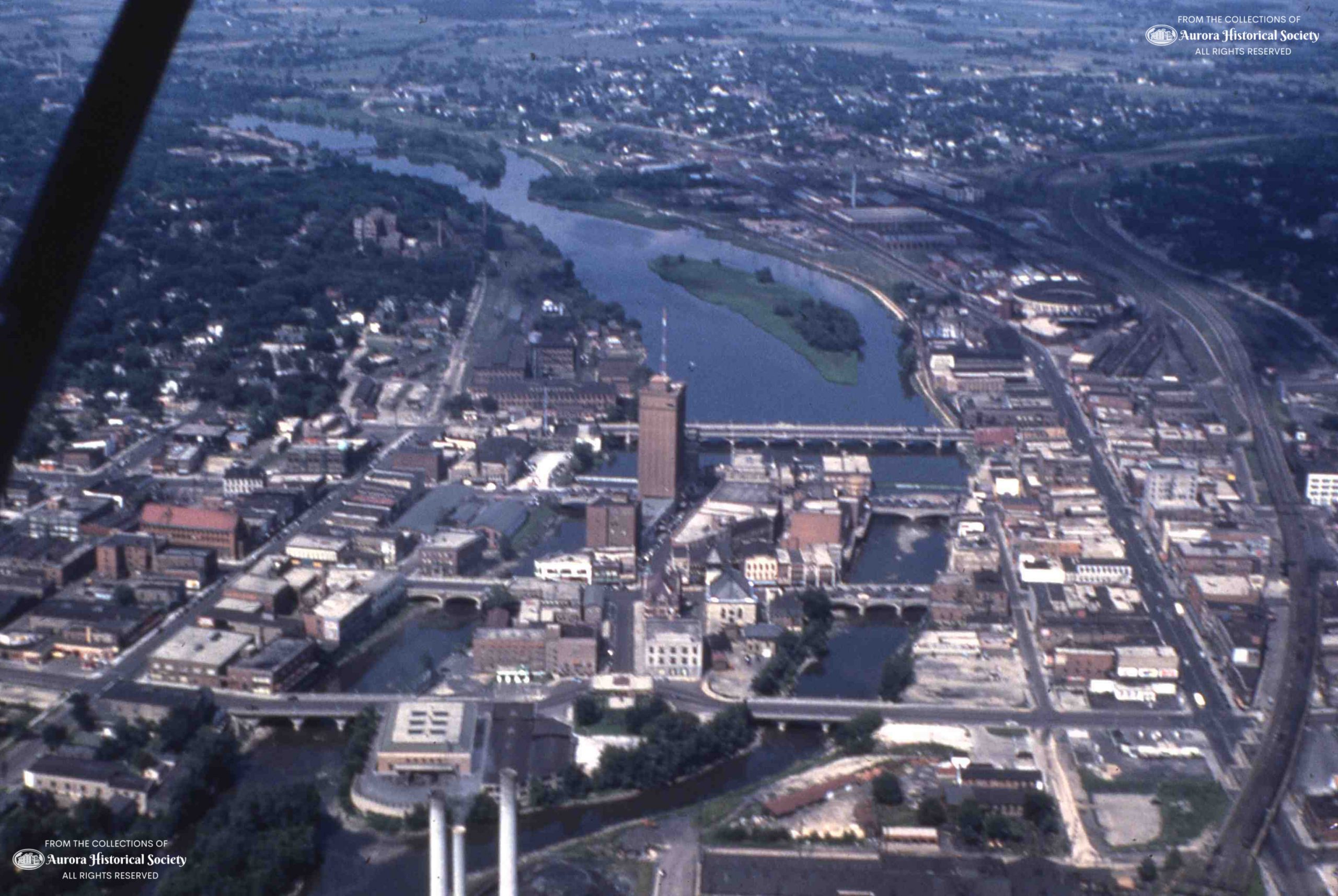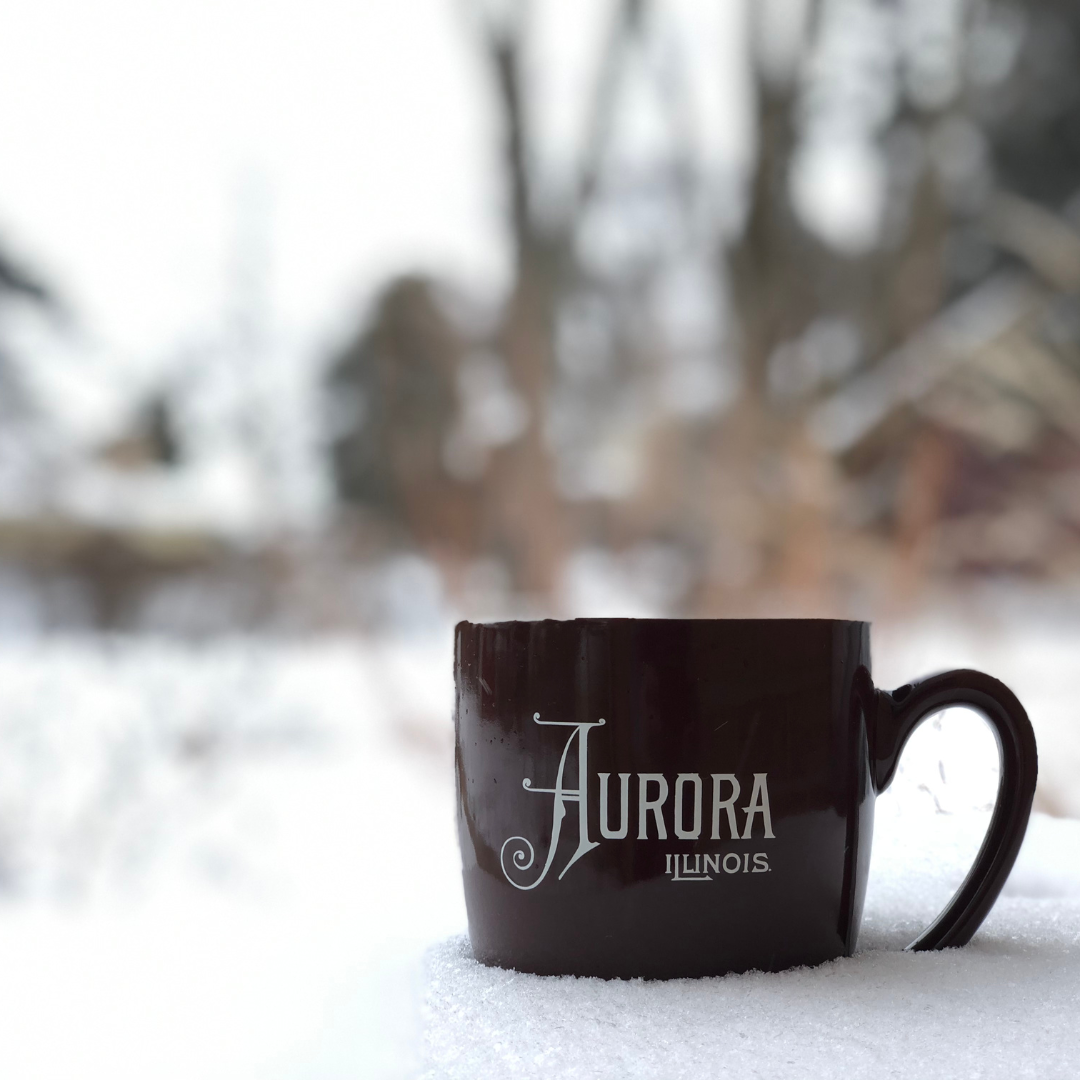
On May 17, 1837, Joseph G. Stolp, just shy of 25 years old, left his home in Marcellus, New York and set out for the west — Illinois. Joseph had apprenticed and learned the wool manufacturing trade, had bought some machinery, and was setting out to make his fortune by starting his own woolen mill operation.
His destination was Aurora, Illinois, a little village on the Fox River. Some family members had preceded him, and his uncle had laid claim, on his behalf, to a little island in the river.
It took 21 days to get to Chicago, then a thriving metropolis of 4,000 persons — traveling first on the Erie Canal and then on a sailing schooner through the Great Lakes. From Chicago, he walked west towards Aurora. After two days, he arrived at the home of his brother John, who lived in DuPage County, about four miles northwest of the village.
The next day, June 12, 1837, he first laid eyes on Aurora. At the time, about fifteen families lived on either side of the river.
He immediately went to live on the island his uncle had secured for him — and which still bears his name today. Within days, he was cutting timber for a mill building on the island, which went into operation that same year. In 1849, he built a much more substantial brick woolen factory, which was expanded in 1858. His factory employed up to 150 people, producing wool cloth and woolen goods. The mill operations ceased in 1887, and the building was leased out, being used until it was destroyed by fire in 1906. The Woolen Mills Store at the corner of Stolp and Downer still stands, as does the Dye House on the west edge of the island, south of the bridge.
The building which houses the Historical Society and the Art Commission — the David L. Pierce Art & History Center — was built by Joseph Stolp in 1866. In 1871, he donated the land for Aurora’s first YMCA, which stood two doors east of the Art & History Center. Across the street, he donated land for the original City Hall building (since demolished) and the GAR Memorial Hall, which was also the first home of the Aurora Public Library.
Stolp was also a founder and major stockholder of the Aurora Silver Plate Manufacturing Company (the building still stands to the west of the Art & History Center and now houses Charlie’s Creamery). And he was a founder and officer of the First National Bank of Aurora. Stolp was truly a man who helped build Aurora.

Stolp outlived all of the other early pioneers of his generation. He died at his home on April 1, 1899, after a fall caused a blood vessel to rupture in his brain. Joseph Stolp was four months shy of his 87th birthday. He is buried in West Aurora Cemetery.

